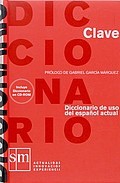Cristales enormes en una cueva mexicana
Parece la fortaleza de soledad de Superman. Tiene cristales enormes, de hasta 1 metro (3 pies) de diámetro y 11 metros (36 pies) de longitud. Pero estos cristales no son de hielo y no están en el Ártico. Están en una cueva, a 300 metros (1,000 pies) por debajo del Desierto de Chihuahua.
Hace mucho calor en la cueva, pero no por estar debajo del desierto. Esta cueva es calentada por el magma de un punto de calor volcánico cercano. La temperatura dentro de la cueva está entre 46 y 47 grados centígrados (entre 115 y 117 grados Fahrenheit), con un nivel de humedad del 96 por ciento. Los científicos que la estudian sólo pueden pasar unos 10 minutos en la cueva cada vez que la visitan. En cada visita pierden 2 kg de agua (más de 4 libras). Dicen que "si te quedas ahí, puedes morir". Es decir, si no eres Superman.
La cueva fue descubierta en 2000. Es parte de una mina de plata, plomo y zinc, cerca del pueblo de Naica, en el estado de Chihuahua, México. Los cristales son de yeso (CaSO4) y se formaron cuando la cueva estaba llena de agua. La Mina de Naica vació el agua de la cueva en 1975 (25 años antes de su descubrimiento). Desde entonces los cristales han dejado de crecer. Pero aun antes de 1975, su crecimiento era muy, muy, muy lento.
Los científicos ya sabían que los cristales grandes requieren mucho tiempo para llegar a ese tamaño; y los cristales enormes, más tiempo. En este caso, crecían tan lento que era casi imposible de medir. Los científicos inventaron un nuevo tipo de microscopio para medir el crecimiento de los cristales. Hicieron estudios en el laboratorio, con muestras de cristales y agua de la cueva. Descubrieron que estos cristales crecen el equivalente del grosor de un cabello humano cada 100 años. Los cristales empezaron a aparecer cuando el agua de la cueva bajó a 58 grados centígrados (136 grados Fahrenheit). Los científicos calcularon que eso habría ocurrido hace casi un millón de años. En unas décadas, cuando cierren la mina, el agua regresará a la cueva. Entonces, los cristales de casi un millón de años de edad podrán continuar su crecimiento, poquito a poquito.
|
Enormous crystals in Mexican cave
It looks like Superman's Fortress of Solitude. It has enormous crystals, up to 1 meter (3 feet) in diameter and 11 meters (36 feet) in length. But these crystals are not made of ice and they are not in the Arctic. They are in a cave, 300 meters (1,000 feet) under the Chihuahuan Desert.
It is very hot in the cave, but not because it is under the desert. This cave is heated by the magma of a nearby volcanic hot-spot. The temperature inside the cave is between 46 and 47 degrees centigrade (between 115 and 117 degrees Fahrenheit), with a humidity level of 96 percent. The scientists who study it can spend only about 10 minutes in the cave each time they visit it. During each visit they lose 2 kilograms of water (more than 4 pounds). They say that "if you stay there, you can die." That is, if you are not Superman.
The cave was discovered in 2000. It is part of a silver, lead, and zinc mine, near the town of Naica, in the state of Chihuahua, Mexico. The crystals are made of gypsum (CaSO4) and they were formed when the cave was full of water. The Naica Mine emptied the water from the cave in 1975 (25 years before its discovery). Since then, the crystals have stopped growing. But even before 1975, their growth was very, very, very slow.
Scientists already knew that large crystals require a long time to reach that size; and enormous crystals, more time. In this case, they grew so slowly that it was almost impossible to measure. The scientists invented a new kind of microscope to measure the growth of the crystals. They did studies in the laboratory, with samples of crystals and water from the cave. They discovered that these crystals grow the equivalent of the width of a human hair every 100 years. The crystals began to appear when the cave water fell to 58 degrees centigrade (136 degrees Fahrenheit). The scientists calculated that this would have occurred almost one million years ago. In a few decades, when they close the mine, the water will return to the cave. Then, the almost-one-million-year-old crystals will be able to continue growing, bit by bit. |

